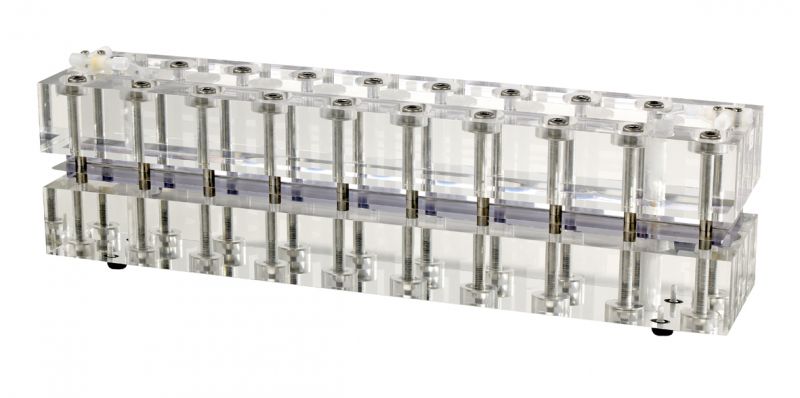Microparticle Preparation
Split Flow Thin Cell Fractionation (SPLITT) is a special preparative Field-Flow Fractionation technique, using earth gravity for separation of µm-sized particles on a continuous basis. Split Flow Thin Cell Fractionation (SPLITT) was invented and first published by Prof. Giddings in 1985. There are different ways of performing SPLITT; in the most common way, the sample containing liquid is pumped into the top inlet a’ at the beginning of the channel and a carrier liquid is at the same time pumped into the bottom inlet b’. By controlling the flow rate ratios of the two inlet streams and the flow rates of the two outlet streams, the separation can be controlled and the sample can be separated in two distinct size fractions. Because earth gravity is used as separation force, Split Flow Thin Cell Fractionation (SPLITT) is limited to particles down to ca. 1µm, depending on their density.
Split Flow Thin Cell (Splitt) Applications
Split Flow Thin Cell Fractionation (SPLITT) has applications in the biomedical field (cell separations), in the environmental area (diatoms, sediments, algae, soil particles) and in the chemical sector (polymer and silica particles). The SEM picture shows Coccolithes, which can be fractionated by using Split Flow Thin Cell Fractionation (SPLITT) (courtesy provided by Dr. Hanno Kinkel, University of Kiel, Germany). In contrast to the other FFF techniques, Split Flow Thin Cell Fractionation (SPLITT) can separate particles in the size range of 1-100 µm on a continuous basis. That means a feed flow of non-separated sample can be continuously pumped into the Split Flow Thin Cell Fractionation (SPLITT). The system has two outlets (one for the smaller and one for the bigger sized particles) where the separated size fractions can be constantly collected. Split Flow Thin Cell Fractionation (SPLITT) is good for sample pre-treatment and clean-up as well as for production purposes.




